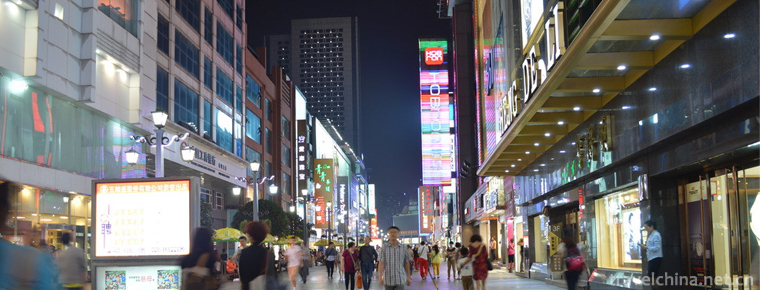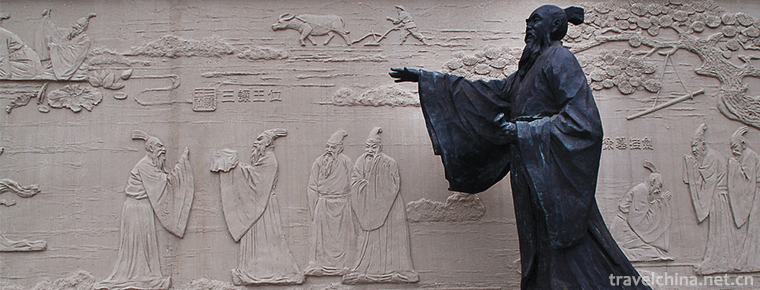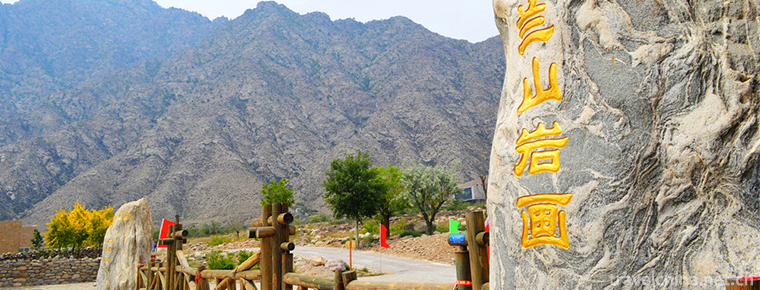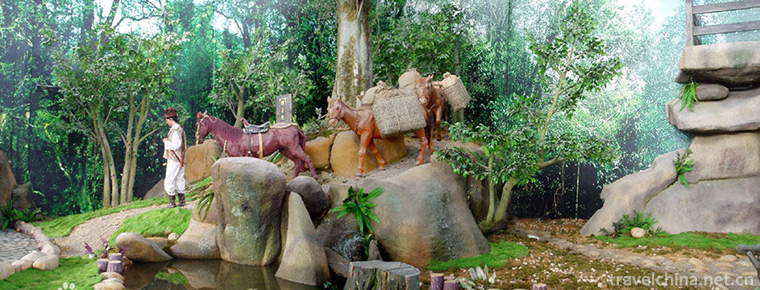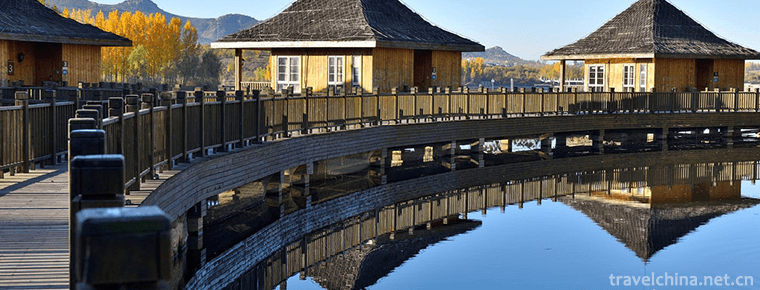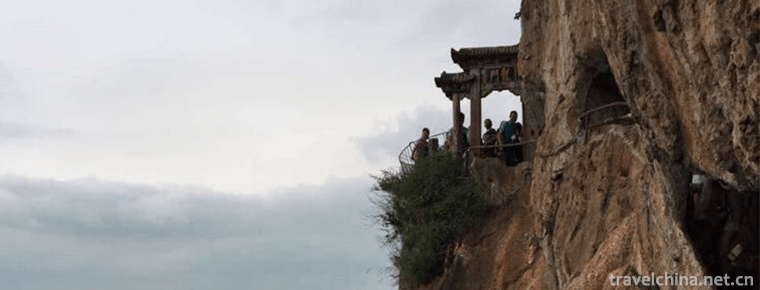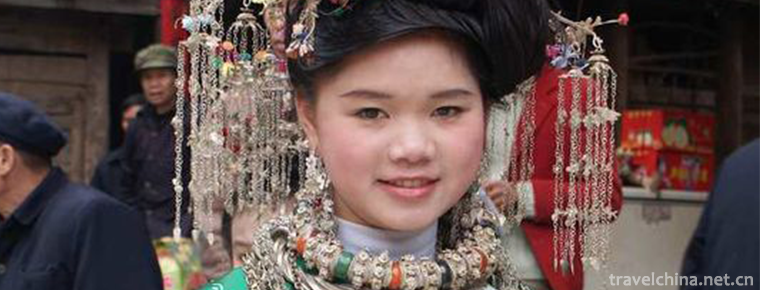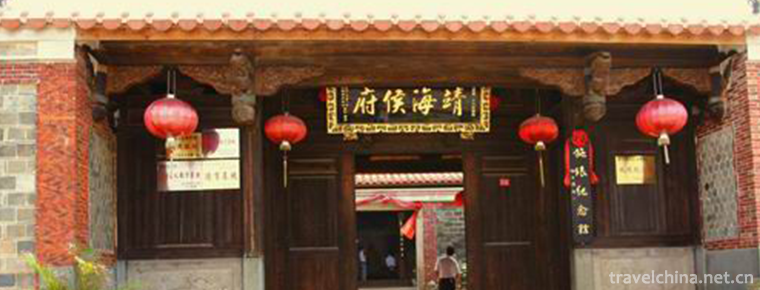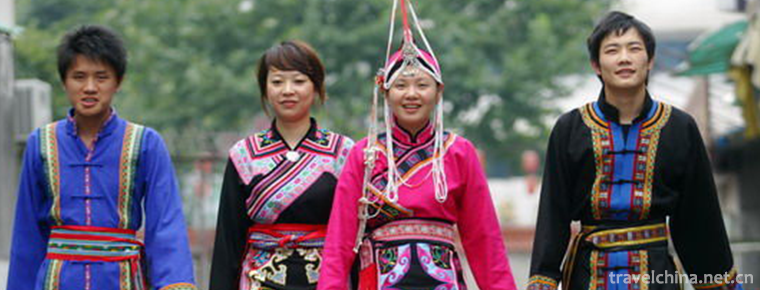Ma Xian Xing custom
Ma Xian Xing custom
The belief in Ma Xian is a traditional folk custom inherited from generation to generation by the people of Fujian and Zhejiang. Ma Xian, also known as Ma Xiaoxian, is a goddess worshipped in northeastern Fujian and southeastern Zhejiang. For decades, mother-in-law and daughter-in-law depended on each other, tolerated humiliation and burdened her, and served her aunt diligently until she died. His filial piety touched the heavens, passed on as a good story, and was sacrificed to God after his death. Tang Suzong was named "Mrs. Mars Protector of the Nation" when he was emperor. He was also known as the three goddesses of Fujian and Zhejiang together with Mazu and Chen Jinggu.
Folklore introduction
Ma Xian Folklore is a kind of folk custom which was approved by the State Council in 2014 and listed in the fourth batch of national intangible cultural heritage list.
The belief in Ma Xian is a traditional folk custom inherited from generation to generation by the people of Fujian and Zhejiang. Ma Xian, also known as Ma Xiaoxian, is a goddess worshipped in northeastern Fujian and southeastern Zhejiang. For decades, mother-in-law and daughter-in-law depended on each other, tolerated humiliation and burdened her, and served her aunt diligently until she died. His filial piety touched the heavens, passed on as a good story, and was sacrificed to God after his death. Tang Suzong was named "Mrs. Mars Protector of the Nation" when he was emperor. He was also known as the three goddesses of Fujian and Zhejiang together with Mazu and Chen Jinggu. Ma Xianxiao's filial piety is also regarded as a model of filial piety by the upper class. Famous historical figures such as Li Yangbing, Liu Bowen and Feng Menglong all wrote articles to praise it. Ma Xian belief was introduced into Zherong in the Song and Yuan Dynasties. It was not only regarded as a model of filial piety, but also became the spiritual sustenance of the people in eliminating disease, eliminating disaster and resisting disaster. Every year, "Yingxian" Temple Ceremony is held. Mothers or mothers-in-law lead their daughters and daughters-in-law to the temple to offer sacrifices. They tell the story of Ma Xian's filial piety and pass on the spirit of filial piety, thus forming a complete set of Ma Xian's beliefs and customs. During the Ming and Qing Dynasties, Ma Xian's beliefs and customs were widely spread and deeply rooted in Funing Prefecture (now Eastern Fujian). Zherong is the center of Maxian belief. The most typical and influential activities of Maxian belief are Zherong. Its influence extends to Fujian, Zhejiang, Jiangxi, Guangdong, Taiwan and Southeast Asia, with more than 20 million followers. Zherong Dongshi Mountain, known as "Xianshan", is a sacred mountain for worshippers of Ma Xian on the border between Fujian and Zhejiang. It is said that the Lingyan Cave on the mountain is Ma Xian's temple and its central place is Ma Xian Temple in Chengguan Xianyu. The thousand-year inheritance of Ma Xian's beliefs and customs has left many cultural relics and attractions, including Lingyan Cave in Song Dynasty, Ma Xian Temple in Yuan Dynasty, Dongshishan Cliff Carvings in Ming Dynasty, and plaques in Ming and Qing Dynasty. There are Baizhangyan, cactus footprints, cactus stream, cactus spring and cactus island.
Forms of expression
The main manifestation of Ma Xian's religion and custom is to hold a grand party on the seventh day of the seventh month of the lunar calendar every year. Its activities consist of the following links: receiving immortals, starting from the Lingyan Cave; offering sacrifices, ritual ceremonies, the central venue in the Maxian Temple of Chengguan Xianyu; traveling in the thirteenth border in order; sending immortals, and sending Ma Xiangyu back to the Lingyan Cave solemnly. At the same time, folk art exhibitions are held, mainly including: Taige, opera, puppet, lantern art, acrobatics, dance, lantern riddles and so on. During the celestial reception, the mother took her children and mother-in-law took her daughter-in-law to worship Ma Xian. Ma Xian was worshipped as a model of filial piety, and gradually evolved into a local god of protection for people to dispel illness, alleviate disaster and protect peace.
Ma Xian's faith and custom activities are to pray for a peaceful country, a prosperous life, harmonious friendship in the thirteenth realm, the integration of traditional morality and filial piety with modern civilization, and the performance of folk traditional art. Ma Xian's religion advocates serving mothers, filial piety, good neighborhood and benefiting the world, which has moral education value. It has important practical enlightenment value for building a harmonious society through the friendship of thirteen borders. During the Ma Xian Temple Festival, mothers and daughters, mothers-in-law and daughters-in-law worshiped Ma Xian, and spread the virtue of Ma Xian's filial piety to their parents-in-law, so as to spread the traditional filial piety culture from generation to generation, promote family harmony and contribute to the construction of a happy family and a civilized society. In the ceremony of "welcoming immortals", the followers run through the whole process with the concept of filial piety, harmony, health and peace, especially advocating and disseminating the filial piety culture of harmony between mother-in-law and daughter-in-law, neighborhood harmony, diligence and thrift, which has the deep-seated characteristics of social morality and is worthy of imitation and implementation in the contemporary era. Influenced by the lack of traditional filial piety education in the contemporary era, the concepts of filial piety, harmony, health and peace advocated by Ma Xian's beliefs and customs not only conform to the traditional virtues of the Chinese nation, but also conform to the moral education of today's society. They have important practical significance and mainstream value in promoting traditional culture and building a harmonious society. Horse custom belief activities provide a carrier for the inheritance of Zherong folk culture and art. Many folk arts, such as string puppet show, bag show, floor show, elevation Pavilion decoration, lighting paper-cut and other skills, are inherited and consolidated in the ceremony activities, and create opportunities for artists'artistic creation and development; Horse custom belief activities, for the government to understand and protect the intangible heritage. Conservation provides complete information, which still has important enlightenment and reference value for the construction of contemporary modern culture.
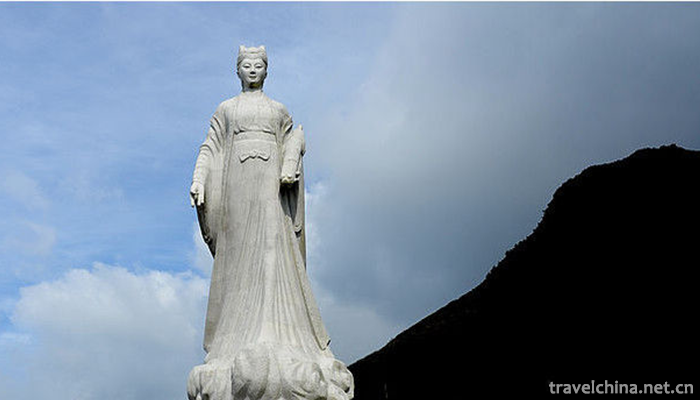
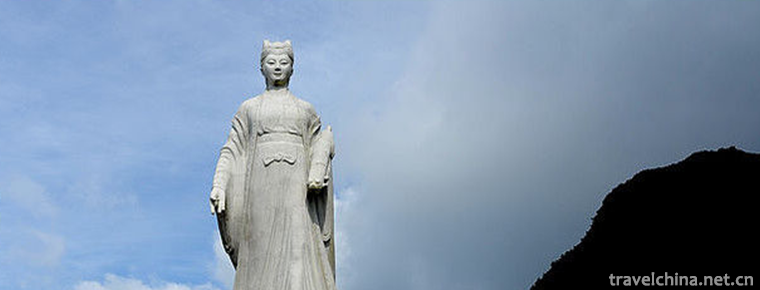
Ma Xian Xing custom
-
Chunxi Road
Jinjiang District Chunxi Road street, Chengdu, Sichuan, China
Views: 106 Time 2018-10-02 -
China of chunqiu yancheng tourist area
China Spring and Autumn Yancheng Tourist Area (also known as Yancheng, Spring and Autumn Yancheng) is located in the central city of Wujin District, Changzhou City
Views: 255 Time 2018-12-06 -
Helan Mountain Rock Painting
Helan Mountain Rock Painting is a national key cultural relics protection unit, the national AAAA level tourist attractions, the national research tourism demonstration base (2016 one of the first 20)
Views: 112 Time 2019-01-13 -
Jiajiang Tianfu Tourist Tea Garden
Jiajiang Tianfu Tourist Tea Garden is an important base invested by Tianfu Group in Western China. It is located in Jiajiang Tianfu Service Zone of Chengdu Chengdu
Views: 106 Time 2019-01-21 -
Eco health Tourism Resort in Sishui Shandong Province
"Shandong Sishui Violent Eco-health Tourism Resort" is a pioneer in China, which combines superior ecological environment, long-standing health culture and modern leisure and vacation indust
Views: 226 Time 2019-02-13 -
Xishan Scenic Area Kunming Yunnan
The Xishan Scenic Area in Kunming, Yunnan Province, is a forest park with ups and downs, verdant trees, white birds contending and beautiful scenery. Dense forest vegetation
Views: 173 Time 2019-02-25 -
Danzhou tune
Danzhou tune is a traditional folk song which only spreads in Danzhou of Hainan Province and has a unique regional style. It is sung in Danzhou dialect with a lively rhythm
Views: 129 Time 2019-04-25 -
Dong minority clothing
Dong women's clothes vary in various styles, styles, decorative parts, patterns, hairstyles and handkerchiefs. They usually wear casual clothes, pay attention to practical use
Views: 541 Time 2019-04-28 -
Construction Techniques of Traditional Residential Buildings in Southern Fujian
South Fujian residential building technology is a unique traditional architectural technology originating in Quanzhou, which began in Tang and Five Dynasties, is the mainstream of ancient architectura
Views: 161 Time 2019-06-05 -
She Nationality Medicine
She medicine is mainly distributed in Jingning She Autonomous County of Zhejiang Province and in some mountainous areas of Fujian and Jiangxi provinces. She nationality has no written language and is
Views: 135 Time 2019-06-14 -
Tiger Sheng of Yi Nationality
Tiger Sheng of Yi nationality is a magical traditional dance of Yi nationality. The Yi people worship tigers and take tigers as totems. It has been said since ancient times that tigers are the people
Views: 179 Time 2019-07-12 -
Dazhou climate
Dazhou city belongs to subtropical humid monsoon climate type. Due to the complex topography, regional climate differences are large. The low mountains, hills and river valleys with an altitude of 800 meters have mild climate, warm winter, early sprin
Views: 417 Time 2020-12-20
